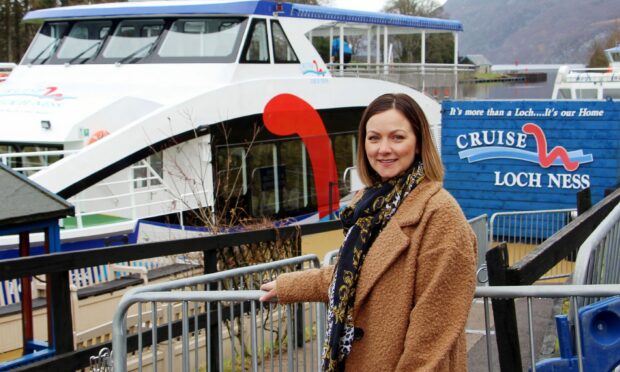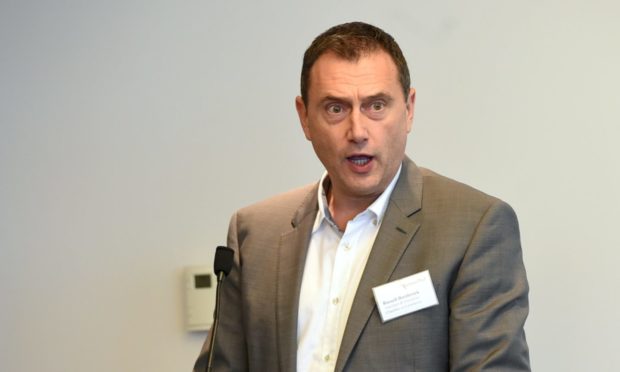Nearly 30,000 workers in the north of Scotland face an uncertain future as the wage scheme known as furlough comes to an end today.
The programme, which at its peak paid a third of all UK employees to stay at home, cost more than £68 billion – the most expensive single piece of UK economic support during the pandemic.
According to the most recent figures, there were 122,500 people reliant on furlough in Aberdeen and Aberdeenshire at the end of July and a further 5,900 across the Highlands and Islands in the same period, representing around 5% of the eligible workforce.
Keep supporting jobs
Debi MacKenzie of Cruise Loch Ness in Fort Augustus would like to see job support continue as businesses reliant on tourism face a bleak winter without much hope of welcoming international tourist.
She said the furlough scheme had been a “lifeline” for the family-owned business, supporting as many as 11 of the company’s 18 employees at various times since the Coronavirus Jobs Retention Scheme (CJRS) came into effect.
“As a seasonal business furlough was a real lifeline for us,” she said. “It allowed us to hold onto members of staff over winter months and into the new season.”
Winter season causing ‘worries’
The company made a small number of redundancies but furlough had prevented a worse situation, she said. The company currently has no staff currently on the scheme as it was able to operate to a greater capacity this summer, but Ms MacKenzie would like to see support to continue.
“For hospitality in particular the winter season is going to be another challenging time. We are worried about it,” she said.
“We would normally have the international tourists and that is what keeps us going over the winter. The number of people doing that is going to be much less than in normal times.
“It would be amazing if the government could do something for the hospitality industry to allow us to safeguard jobs going into next season. We have come to the conclusion it’s not going to happen but on the same token we would love there to be a last-minute gesture from the government on that front.”
But with other employers recording record-high job vacancies and acute shortages of workers such as truck drivers, some think it’s high time the programme was shut down.
Tony Wilson, director of the Institute for Employment Studies think tank, said: “Now we need to start focusing more on active measures to help people take up the jobs that are available, rather than passive measures that pay people not to work.”
Fears of joblessness increase
Russell Borthwick, chief executive of Aberdeen & Grampian Chamber of Commerce (AGCC), said it was likely that the end of the furlough scheme would add to joblessness, and employers needed support to bring them back into the fold.
He said: “With rising cost pressures and an increasingly onerous tax burden likely to stifle businesses recruitment intentions, a notable rise in job losses as furlough ends is probable.
“Whether furloughed workers are returning to the workplace or the wider labour market, it is vital that employers and government provide the support and training they need to be re-engaged and productive.”
Hard decisions
David Groundwater, FSB’s development manager for Aberdeen and the north east, said: “While far fewer people are on furlough now than at the height of the crisis, there’s no doubt that the end of the scheme will force at least some businesses in the North to make some hard decisions. On the other hand, we know that some businesses and sectors are crying out for staff.
“To ensure we don’t need to see a spike in joblessness, we need to do everything possible to help local and independent firms get back on their feet. Small and medium sized firms have an enviable record of creating jobs and opportunities, though these operators are billions of pounds of Covid debt.
“That’s why decision-makers need to do all they can to keep the pressure off these businesses by, for example, keeping a lid on spiralling overheads and ensuring independent firms win a fair-share of green contracts.”
Boost consumer spending
Others are focusing on next steps to support areas of the economy that were hit hardest by the effects of the pandemic.
If the 1.6 million people in the UK who were still on furlough at the end of July don’t return to work, the impact on household disposable incomes and retail spending is a significant cause for concern.
Citizens Advice Scotland (CAS) fears struggling households are facing a “perfect storm”, with energy bills set to rise when the price cap increases at the start of October just as furlough ends. Just a few days later, the temporary uplift to Universal Credit, introduced in the wake of the Covid-19 pandemic, will also cease.
David Lonsdale, director of the Scottish Retail Consortium (SRC) said: “Whilst most of the government’s Covid restrictions have been lifted, the reality is that customer footfall, transactions in shops and retail sales are still falling short of pre-pandemic levels, especially in our larger towns and city centres.
“The ending of furlough is a stark reminder that jobs in retail can only survive as long as the shops and business which support them.
“That is why it is essential that we see further action from government to stimulate consumer spending and entice shoppers back to our city centres, and to blunt April’s full reinstatement of business rates.”
The North Sea oil and gas industry was also a significant beneficiary of the furlough scheme. Trade body OGUK said it had offered “a vital lifeline to many of our members enabling them to retain hundreds of workers”.
As the scheme shut, Alix Thom, OGUK workforce & skills manager, said: “The Coronavirus Jobs Retention Scheme has been very beneficial for many organisations within our sector, supporting them through an incredibly challenging period throughout the Covid-19 pandemic.
“The UK oil and gas industry continues to work to attract investment in the basin, which will drive activity and enable us to retain jobs in communities that really need them – jobs that the country also will need to successfully manage our transition to a low-carbon energy mix.”



